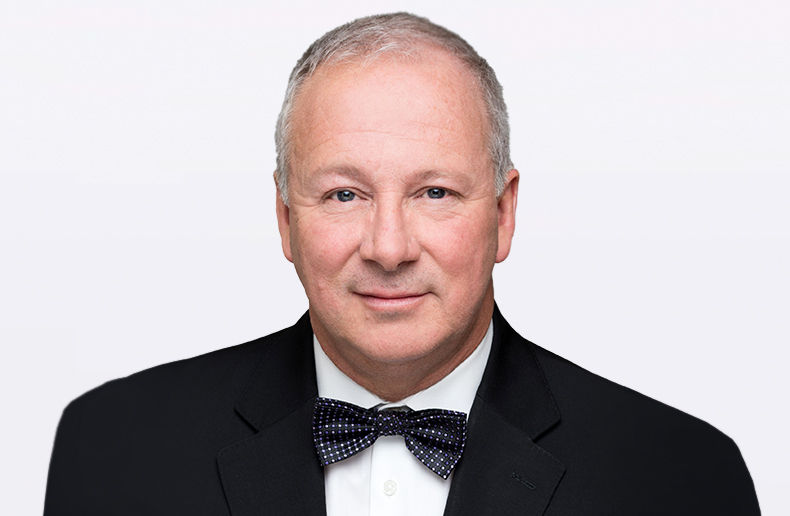Advisors are shifting to fee-based management but have not cut commissions completely. Many focus their practice on F series funds for a high net worth clientele, and turn to other low cost solutions to serve small investors.
Distribution networks are battling fiercely over the $4.1 trillion in Canadians’ financial assets at Dec. 31, 2016, statistics compiled by Strategic Insight reveal. The banking world is a heavyweight: its direct branches or advisors captured $1,444 billion of these assets in circulation in Canada. Full-service securities brokers garnered $1,128 billion. Financial advisors hold a $501 billion share of the pie.
Fee disclosure
Independent mutual fund advisors are trying to stand out from the banks, in a world of fee disclosure, which may soon be commission-free. They are turning to fee-based products, including F-series funds. The challenge is formidable. According to the most recent statistics by the Investment Funds Institute of Canada, mutual fund assets reached $1,339 billion in Canada on Dec. 31, 2016.
Detailed statements that specify investment fees and returns have circulated since the start of the year, triggered by the new Client Relationship Model rules (CRM2). Fee sensitivity has heightened as a result. Advisors and clients are increasingly weighing the cost of investment products relative to their added value, Benjamin Reed-Hurwitz, associate consultant and senior analyst at Strategic Insight points out. For example, mutual funds might be preferred by an investor who appreciates being able to get the personal touch from an investment manager, he says. But each cost component is scrutinized for all products, he adds.
F-series mutual funds benefit from this trend. This fund category lets advisors negotiate management fees with the client, according to the assets managed. Clients pay these fees directly. Investment costs thus become transparent rather than being embedded in the management expense ratio (MER). In addition, the fund manufacturer does not pay the advisor a commission. As a result, the MER is lower than that of a fund with an embedded commission.
Regulatory pressure is reviving discussions of costs and having an impact. Manufacturers are reducing their F-series fund costs. One example, SEI Canada cut the costs for 23 funds in its F-series, including its balanced fund, whose fees dipped from 1.10 per cent to 0.95 per cent on July 1, 2017. The cost of its F-series Canadian small-cap equity fund slid from 1.00 per cent to 0.95 per cent, and that of its emerging market funds edged from 1.25 per cent to 1.15 per cent.
Many distributors are witnessing a change in their mutual fund sales profile. “Our sales of F-series funds have increased sharply, both in the full-service securities brokerage network and for financial planners and mutual fund representatives. We are selling fewer and fewer funds with a back-end load (also known as DSC or deferred sale charges). These funds have become a minimal portion of our total sales. In contrast, no-load funds (front-end load not billed to the client) still make up a good portion,” Alain Huard, Vice-President Retail Sales, Quebec at Invesco Canada told The Insurance and Investment Journal.
Players that straddle the independent network and the bank network are also seeing this trend. BMO Global Asset Management’s F series funds made up only 19 per cent of all of its advisor series fund sales at Oct. 31, 2014, but have now grown to 51 per cent at Oct. 31, 2017, says Léon Garneau Jackson, vice-president, sales, Eastern Canada at BMO. “I think the whole industry is seeing roughly the same phenomenon,” he adds. Jackson also works with independent advisors in the full-service securities broker networks at mutual fund firms.
Back-end load
BMO traditional funds are holding onto their brands despite the spectacular rise of another low-load solution: exchange traded funds (ETFs). “We have seen a record year in ETF sales, but mutual fund and segregated fund sales also had a great year,” Jackson says.
BMO is also observing a decline in backend fee products. “They now represent less than 5 per cent of our sales,” Jackson observes. His statistics show that these funds account on average for 2 per cent of sales in the mutual fund industry. “With CRM2, advisors realized that they have to be as transparent as possible in their compensation. Also, people are afraid of what might happen to trailing commissions; there has been lots of talk of eliminating them in recent years,” he continues. Many advisors then decided to convert their practice to fee-based management, he explains. Jackson says that F-series funds lend themselves well to this model for both (full service) investment advisors and mutual fund representatives.
François Bruneau, Vice-president, Administration and Investment at Groupe Cloutier Investissements, confirms the trend toward low-load funds, but says it is less apparent for F-series funds. “We are seeing a demand to create fee-based accounts through F-series funds, but it is not a mad frenzy. These funds are still used relatively infrequently by advisors,” he says
This may change as F-series funds become better known to the public. “Before, F-series funds were strictly offered within nominee accounts,” Bruneau explains. “Manufacturers now want to sweeten the sale of F-series funds in networks like our own. They offer to take care of the billing, which reduces the need to set up a nominee account.”
Nominee account
In a nominee account, the brokerage firm, rather than the product manufacturer, holds and registers the clients’ securities in its name. For example, stocks, ETFs or F-series mutual funds can be held in the account of the client, who becomes the beneficiary. The firm facilitates the transactions and handles billing. However, the structure of the nominee account is not suitable for all firms, Bruneau says. “The nominee account is less accessible to small players because it requires the use of a trustee services,” he points out.
Groupe Cloutier has seen a sharp rise in manufacturers’ private management products in recent years. “Before, it was difficult to take on the large institutions. Now fee-based products can target a clientele whose assets range between $500,000 and $750,000 for example, a segment often overlooked by large full-service securities brokers. This niche now makes up the vast majority of the deposits that we receive,” Bruneau says.
President and founder of De Champlain Groupe financier, Sylvain De Champlain is convinced of the advantages of F-series funds. These funds let him shift toward fee-based management. “We started this transition eight months ago. Presently, 45 per cent of my business has gone to fee-based management. By the spring, I want all my clients to have a fee-based account,” he says
Amplified by CRM2, a quest for transparency has motivated this reorientation, along with the desire to improve fairness in client relations, De Champlain explains. “Traditionally, a commission embedded in the management expense ratio might represent a total cost of about 2.3 per cent. Of this amount, 1.15 per cent goes to the fund company, which will pay, among other things, the taxes and management fees, he explains. “I charge fees of 1.15 per cent each month, collected by my mutual fund broker, Investia Financial Services, including 0.95 per cent for my firm and 0.2 per cent for Investia. It is a little unfair and illogical if a client with assets of $1 million and another who has only $50,000 have to pay the same fees. Because I don’t work harder for one than for the other.”
De Champlain describes how his F-series funds model improves fairness via an asset-based fee scale. “For a client with $500,000 in assets, total fees will be 2.1 per cent. The manufacturer keeps 1.1 per cent. The broker keeps 1 per cent. My client saves about $1,000 per year, equal to 0.2 per cent per year for his assets,” he explains. “In a model with an MER with embedded commission, it was all done automatically and it was not transparent. The company and the broker portion are now separate. Brokers make their own arrangements to get paid. As a result, the total MER decreases.”
Upsurge in business
Users of F-series funds have noted an upsurge in business. De Champlain says his company has gained clients. “The upcoming regulatory changes signal that we are leaving the world of commissions and entering the fee world. We know this is inevitable. In two or three years, all commissions will have disappeared. We need to adapt. Responding proactively to this change has let us attract new clients. Some clients have said to me: ‘Do you work for fees? I want to meet you.’ Talking to them about commissions is the wrong answer,” he says.
De Champlain mentions another advantage of F-series funds: although sales taxes apply, the fees can be claimed as a tax deduction. “When a client sees fees of $5,000 for a $500,000 account on their annual statements, they wonder what service they obtained in return. The value of the advisor then becomes clear. Those who developed solid client relations will have extraordinary opportunities,” he says
Advisors need a strong stomach to take the leap to fees. “For sure, you won’t be making the same figures as before. With fees of 1 per cent instead of a 3.5 per cent commission, it will take 3.5 years to get roughly back to the same point,” De Champlain explains. This is why 30 per cent of advisors left the industry after the United Kingdom banned commissions, he adds.











